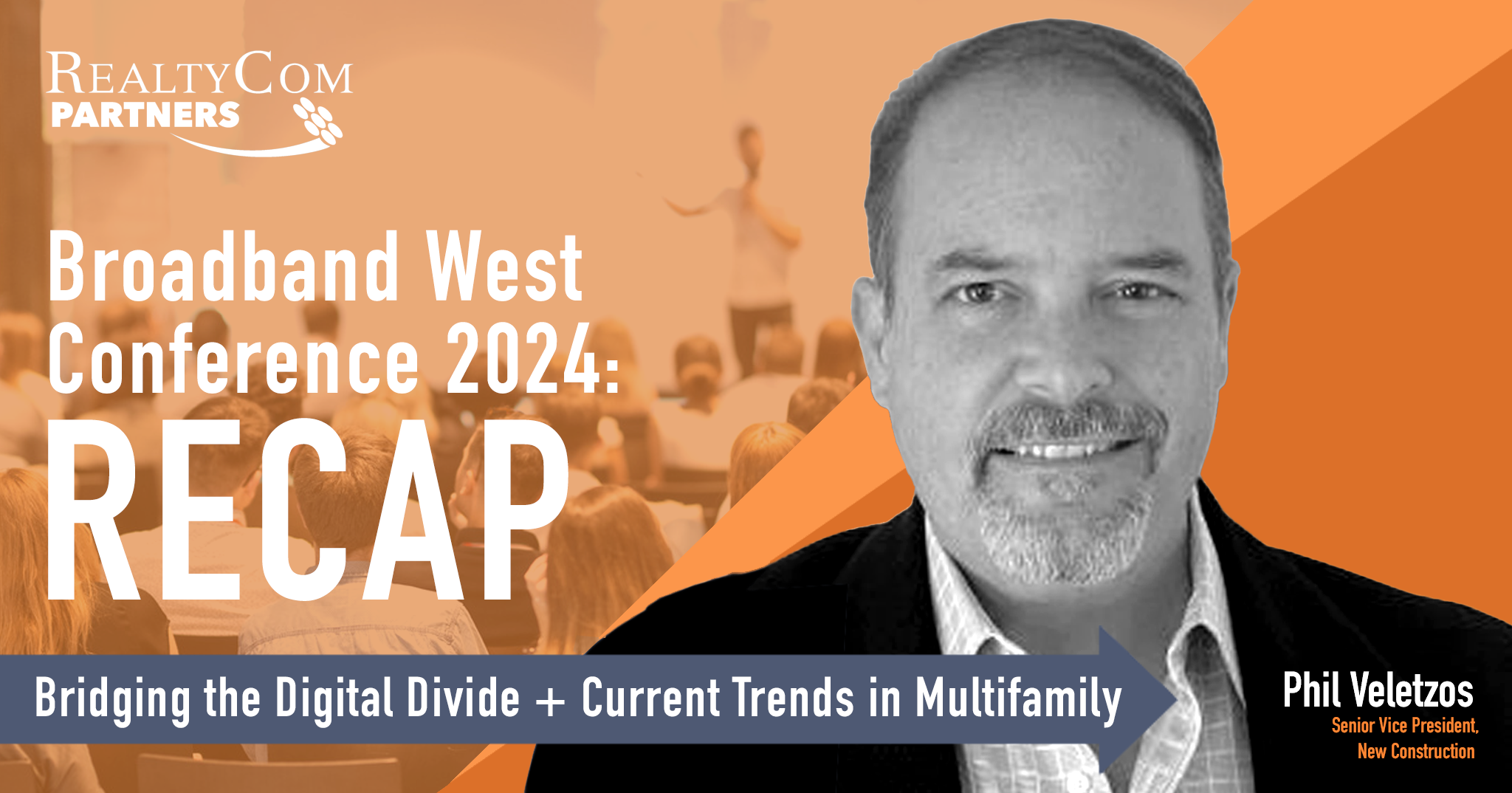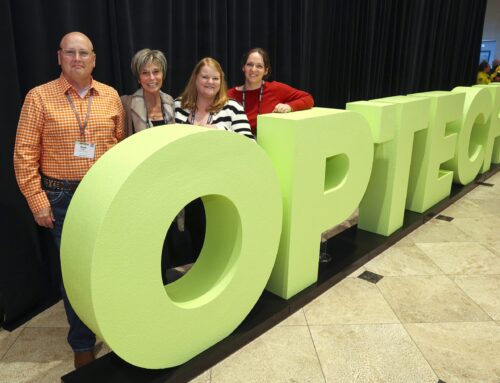By Phil Veletzos
The San Diego Convention Center hosted the inaugural Broadband Communities Summit West conference on October 30th and 31st. Bridging the digital divide was the overarching theme, with presenters that included government representatives, public-private partnerships, and stakeholders who shared both their challenges and best practices for accessing available State and Federal funds for municipalities and service providers to expand their networks to “unserved” (sub-25 Mbps) and “underserved” (between 25-100 Mbps) communities across the country.
Subtopics included neutral host networks, development challenges with master-planned communities, and current trends in the negotiation of Multifamily service provider access agreements. If you couldn’t attend the summit, we’ve rounded up an overview of the highlights:
Broadband Equity Access and Development Program (BEAD)
The Infrastructure Investment and Jobs Act (IIJA), signed into law on November 15, 2021, resulted in the $14.2 billion Affordable Connectivity Program (ACP) as well as the $42.45 billion Broadband Equity Access and Development Program (BEAD). Speakers and participants were almost unanimous in their praise for the effectiveness of ACP and in providing its $30 subsidy ($75 if on Tribal lands) for their internet bills through their service provider. The June 1, 2024 expiration of the ACP resulted in cancellations of many of these subscriptions by participants who could no longer afford the service, or the same level of service, without the subsidy. These cancellations and downgraded service levels are negatively affecting Internet Service Providers’ (ISPs) revenues in 2024, perhaps dampening their appetite for expanding into other currently underserved communities and widening the current digital divide.
Against this backdrop, many panelists speaking about BEAD highlighted the difficulty in aligning funds (distributed via states and their agencies e.g., California PUC) with ISPs hesitancy to take public grant money for building networks to underserved neighborhoods fearing that future subscription revenues will not support their operational expenses long term. Creative solutions on minimizing build costs and lobbying to re-enact ACP, or similar Fed/State internet subsidies, were discussed as creative ways to work around this challenge. Los Angeles County, as an example, highlighted their migration from their initial “fiber to the home” design to a fixed wireless plan thus reducing the build cost and time to achieve market penetration. As we’ve seen in our industry over the years, infrastructure costs are the biggest impediment to enhanced internet service, but the “perfect” cannot be the enemy of the “good.” The negative effect of creating fewer jobs (one of the goals of the IIJA) and building a wireless network to the home vs the desired fiber network, were seen as necessary and perhaps a temporary sacrifice to advance the momentum and progress made towards the goal of reaching underserved communities. Many of the participants in this struggle have been working on the goal of closing the digital divide for more than 20 years and are dedicated and passionate about continuing to make progress. Each municipality will take different creative approaches to solving this problem and will seek to leverage new technologies including fixed wireless and satellite-based internet services integrated with a fiber-based backbone approach so that efficiencies can be achieved.
In addition to varied network design choices by municipalities, States differ in grant application processes for BEAD, with some further ahead than others. Representatives from states that are leading in this effort, including Montana, North Dakota, and California, each outlined challenges and best practices they learned from their implementation of the BEAD grant application and review programs for their states. Common themes emerged of building relationships within their state zoning and planning departments to facilitate forward progress, similar to how private companies foster those relationships. Grant-funded programs are treated similarly to all other applicants and all of them benefit by building their relationships with those offices and departments that provide required permits.
Middle Mile and Neutral Host Networks
The middle mile provides a vital connection between global internet and last-mile providers. The use of public funds enabled this critical infrastructure to be built. State and local governments are leveraging state agencies and easements. Cal Trans in California is planning to build out middle-mile networks that will run between cities and towns allowing service providers to use that infrastructure to provide their services across wide geographic areas. The goal is to bring Service Providers to service small towns across the country and deliver options to areas that are in need. Another innovative approach to bridging the digital divide is the construction of neutral host networks where one fiber network is shared between multiple service providers, each competing with one another for subscribers within a municipality or master-planned community. The number of service providers needs to be limited so that revenue potential is high enough to achieve reasonable payback. These innovative approaches help bring state-of-the-art internet services to currently underserved communities.
Current Trends in Multifamily Access Agreement Negotiations
Now that the risk of an adverse reaction by the FCC towards bulk billing has been seemingly reduced, current trends towards bulk-managed Wi-Fi continue. Drivers continue to be a superior user experience, creating a foundation for smart unit installations/building system integration and significantly more revenue for Owners than found in traditional competitive retail revenue share models. Owners seeking to convert existing MDUs to bulk-managed Wi-Fi must evaluate the existing infrastructure available and integrate the effort with smart apartment IoT initiatives or other building system upgrades and advancements (e.g., EV charging stations that may require wireless internet).
For new construction, a clear understanding of an Owner’s desired areas of coverage for common area Wi-Fi and a detailed RFP process is required, so service provider proposals are obtained that align with the building type (Mid/High or Garden) and individual attributes of each. Both conversions or new construction projects come with a strong recommendation to seek local counsel to ensure compliance with local regulations to ensure a resident’s monthly internet payment is consistent with all local and state laws. Also, due diligence on the service provider partner is needed to ensure they have the capital, back-end capabilities, and track record needed for this single provider environment.
Development Challenges with Master Planned Communities
Seeking counsel early for master-planned communities is a good practice as early decisions regarding public or private easements, street dedications, relocation strategies, and other infrastructure-related items can have a significant impact on downstream decisions. Moreover, a number of the concerns of a master-planned community are different from single MDU development. As the relationships with relevant parties involved are established it is important to be aware of these differences so they are addressed and prioritized (e.g., negotiation of Avigation Easements for drone access). Evaluating the sequence of parcel and building releases is important to ensure that critical telecom infrastructure is not located in a phase or building subsequent to when services need to be delivered to an MDU or commercial building. A Developer has a fiduciary responsibility to HOAs that they should not create revenue streams for themselves that go beyond the title transferring to the HOA. A “package” should be prepared for the HOA and for the Developer’s future reference that outlines all the telecom plans, relevant telecom agreements, and how they operate to the benefit of the HOA.
If you’d like to explore other trends or have questions about topics discussed at the conference, feel free to reach out to us at info@realtycompartners.com. We’d be happy to connect and continue the conversation, especially relating to Managed Wi-Fi deployments, as our own Phil Veletzos, SVP of New Construction, was an expert speaker and panelist during this session!






